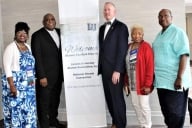You have /5 articles left.
Sign up for a free account or log in.
Weak economy. Shifting student demographics. Unstable enrollment. Budget deficits. Deferred maintenance. Leadership turnover. Risk management. Calls for accountability. Contested governance boundaries. Divergent agendas and expectations. Risky student behaviors. Crisis management.
The above represents a snapshot of issues facing higher education leaders today. As I reflect on my first year as president of Wittenberg University, one of the continuing challenges has been maintaining the focus of the campus community and governing board on our collective role in systematically facilitating the core enterprise of student engagement, learning and success. The need for such focus is obvious, yet attention is too often deflected from the core to the drama of the day, the performance of those in areas such as admission or advancement, or some tactical idea that captures the imagination of an individual or group.
In discussions surrounding this challenge, it became clear that my campus lacked an appropriate mechanism to engage the full constellation of constituencies (students, faculty, staff, alumni and board members) in productive dialogue about priorities as we work together as a team to develop a shared vision for the future of the institution. Effective teams are inclusive, engaged and committed to the same aspirational goals. High-functioning teams also have a clear strategy and aligned resources, and embrace an integrated approach to priority setting and resource allocation.
Given this, I recently appointed an Integrated Planning and Budgeting Committee charged with identifying and funding institutional priorities through the internal reallocation of resources. This latter point is critical because it highlights not only the importance of deciding what we should be doing, but also what we should stop doing as an institution.
I anticipate that at least two of the priorities emerging from this process will focus on aspiring to excellence in engaged liberal learning and an uncompromising commitment to student engagement and success. In terms of the former, I would expect exploration of the following topics: identifying areas of academic strength for investment; monitoring student learning outcomes; assessing student satisfaction with areas such as advising and curricular offerings; and tracking and improving student success in terms of retention and graduation rates, graduate and professional school acceptance, job placement, and alumni survey results. As it relates to student engagement and success, I would expect the following to top the agenda: exploration of student participation, satisfaction, and learning resulting from effective educational practices, including community engagement, student-faculty collaborative research, international study, leadership development programs, student employment and athletics/club sports.
In addition to focusing attention on issues surrounding academic quality and student success, using such an Integrated Planning and Budgeting model has a number of other benefits, including:
a) facilitating a collaborative process to develop consensus on a shared vision for the future;
b) focusing sustained attention on institutional priorities fostering continuous improvement; and
c) linking planning, budgeting and assessment to support data-informed decision-making.
While I have used a similar approach to planning successfully in the past, I encourage others to share the structures and processes they have found helpful in clarifying expectations regarding the roles and responsibilities of faculty, administration, alumni and governing boards as they relate to the joint responsibility for academic quality, student learning and student success. Keeping our eyes focused on students as the center of the educational enterprise is worthy of our best team effort, and I look forward to reporting back on our results.
Laurie M. Joyner, President
Wittenberg University

Want articles like this sent straight to your inbox?
Subscribe to a Newsletter





